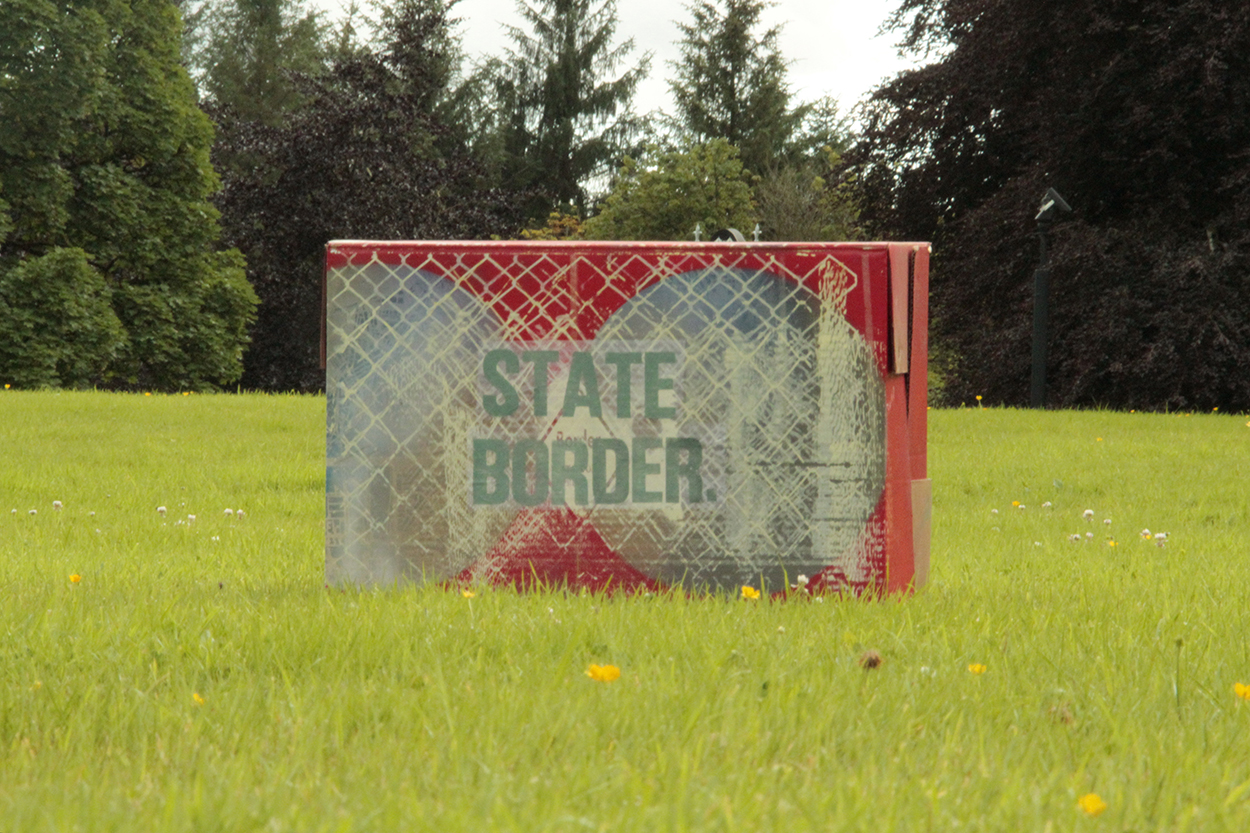
In October 2016 artists Paul Liam Harrison, Catherine Hehir, Scott Hudson, Des MacMahon, Noelle Noonan and Suzannah O Reilly, met, by arrangement, at the Tyrone Guthrie Centre in Monaghan as part of a joint residency that they had concocted at the Impact Printmaking Conference in China 2015. This had been motivated through a common interest in print media and the potential for creative collaboration across geopolitical borders.
The Monaghan location of the residency (the UK/ Irish border) and the current political climate of autumn 2016 (Post Brexit confusion/ Trump’s election), essentially set the tone for discussions towards this as yet unknown and unnamed collaborative project.
As the artists sat around the large board room table in the opulent library setting of the traditional country house that is the Tyrone Guthrie Centre, discussions turned to global issues that were beginning to loom large regarding immigration, citizenship, borders, trade and economies for example. Perhaps in response to a general feeling of desperation and helplessness, the discussion evolved to consider things that were more tangible – and how ‘we’, as artists, could comment and be active in response. As printmakers, the dialogue naturally gravitated to the potential and nature of print, and the role that it had played in the establishment of state power and governance over the past 500 years. The more this was considered the more it became apparent how central print had become to the mechanisms of power and nation state. Print has been both celebrated and suppressed – a mechanism for both establishment control and revolutionary ideas – but more than this – print has become the fabric that binds the system together. Print is the conduit that facilitates communication and enshrines the rules and regulations of the state. Printed money is essential to economies and printed passports and visas enable the movement of people globally – and so on.
Simultaneously, the artists had been considering the potential of printed sculptural works that would have the flexibility and presence to intervene and occupy any space but could also be flat packed for mobility. Several forms were discussed, but the simple utilitarian cardboard box form was agreed upon as a final solution. This offered both volume and surface area whilst being lightweight and cheap. It would enable a site specific response to any space or area whilst creating situations or environments for bespoke performances and events. The conceptual foundations of the State Of Print were laid – passports and currency would be next.
The artists decided that they would each print ten boxes of agreed standard dimensions and reconvene at the Tyrone Guthrie Centre several months later at the invitation of the Director, Robert MacDonald – with the dual intention of testing the newly refurbed print studio and initiating the Annaghmakerrig Print Residency. At this point the artists tested the structures of the multiple boxes in a variety of locations whilst also beginning work on further apparatus of the state, such as designs for the currency and emblems of the state. It was then proposed that additional artists be invited to become citizens – by each printing ten boxes which they would be provided with (thanks to sponsorship from Unified2 Global Packaging Group). A Thousand boxes have now been distributed to artists and the population of the State of Print is increasing.












